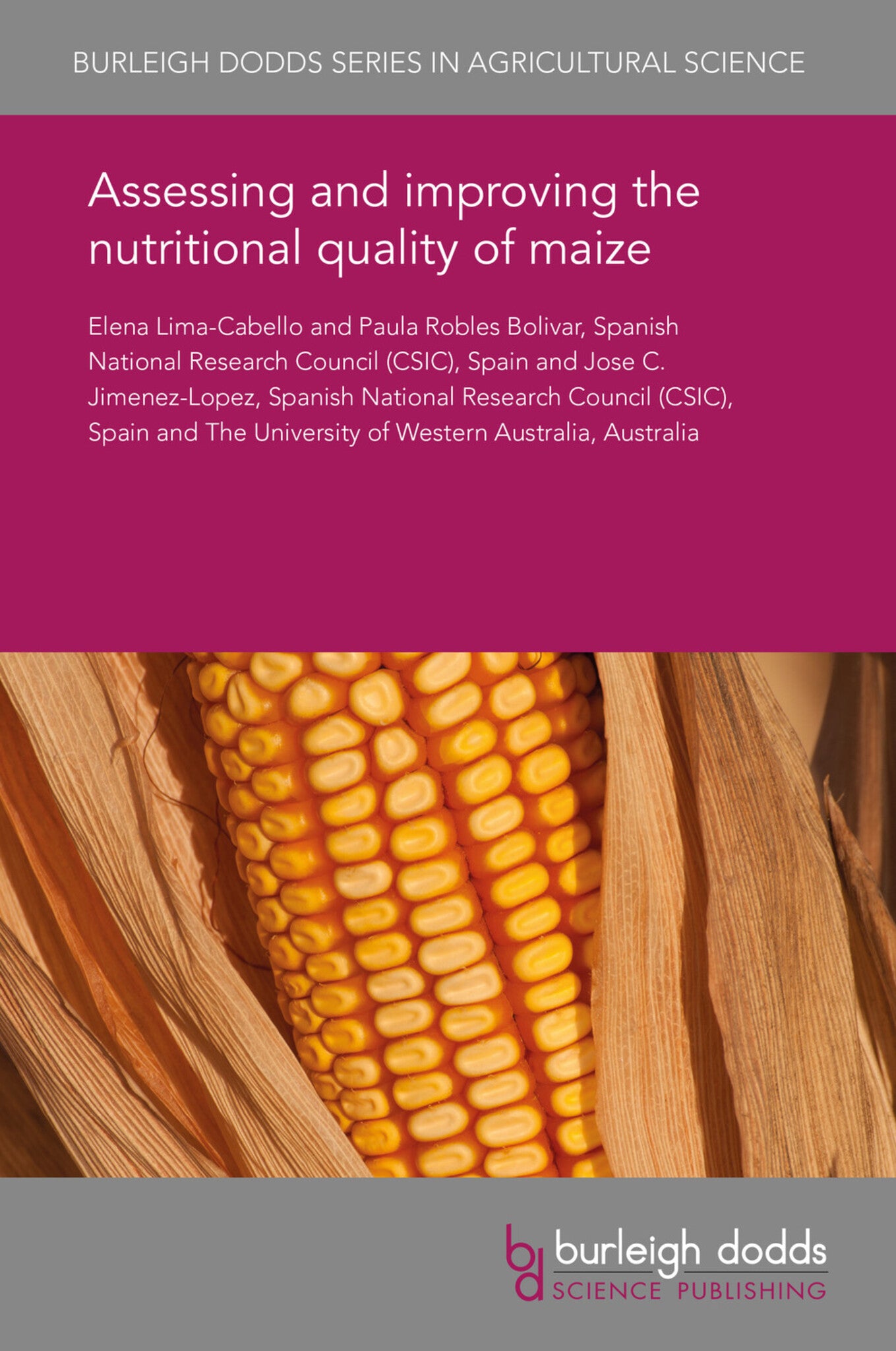We're sorry. An error has occurred
Please cancel or retry.
Assessing and improving the nutritional quality of maize

Some error occured while loading the Quick View. Please close the Quick View and try reloading the page.
Couldn't load pickup availability
- Format:
-
09 June 2017


TECHNOLOGY & ENGINEERING / Agriculture / Sustainable Agriculture, Agronomy and crop production, TECHNOLOGY & ENGINEERING / Agriculture / Agronomy / Crop Science, Botany and plant sciences, Sustainable agriculture

1 Introduction: maize kernel composition 2 Overview of methods for improving the protein and starch content of maize kernels 3 Improving the protein content of maize using mutant lines 4 Improving the starch content of maize using mutant lines 5 Improving the digestibility of maize protein and starch 6 Assessing and reducing the anti-nutritional properties of maize 7 Conclusions 8 Where to look for further information 9 Acknowledgements 10 References



